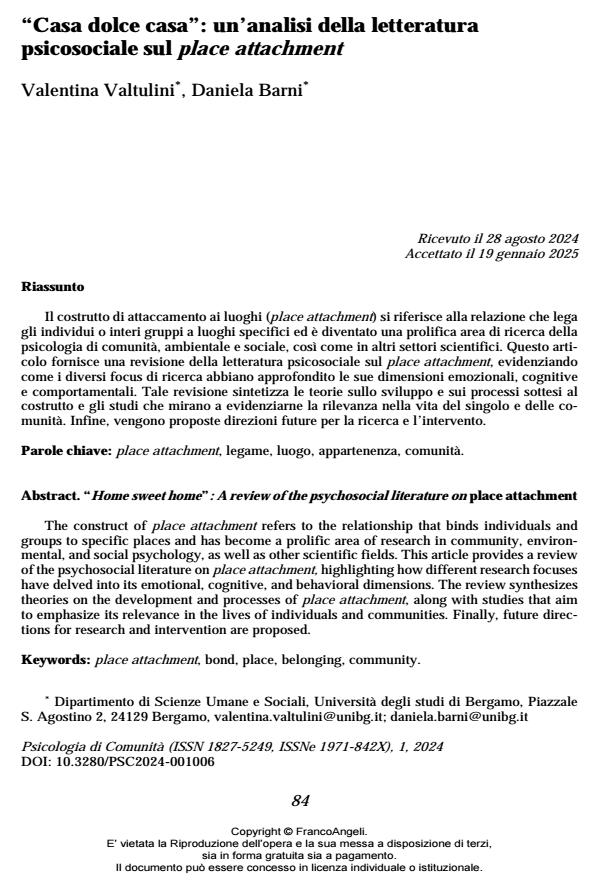“Casa dolce casa”: un’analisi della letteratura psicosociale sul place attachment
Titolo Rivista PSICOLOGIA DI COMUNITA’
Autori/Curatori Valentina Valtulini
Anno di pubblicazione 2025 Fascicolo 2024/1
Lingua Italiano Numero pagine 23 P. 84-106 Dimensione file 144 KB
DOI 10.3280/PSC2024-001006
Il DOI è il codice a barre della proprietà intellettuale: per saperne di più
clicca qui
Qui sotto puoi vedere in anteprima la prima pagina di questo articolo.
Se questo articolo ti interessa, lo puoi acquistare (e scaricare in formato pdf) seguendo le facili indicazioni per acquistare il download credit. Acquista Download Credits per scaricare questo Articolo in formato PDF

FrancoAngeli è membro della Publishers International Linking Association, Inc (PILA)associazione indipendente e non profit per facilitare (attraverso i servizi tecnologici implementati da CrossRef.org) l’accesso degli studiosi ai contenuti digitali nelle pubblicazioni professionali e scientifiche
Il costrutto di attaccamento ai luoghi (place attachment) si riferisce alla relazione che lega gli individui o interi gruppi a luoghi specifici ed è diventato una prolifica area di ricerca della psicologia di comunità, ambientale e sociale, così come in altri settori scientifici. Questo articolo fornisce una revisione della letteratura psicosociale sul place attachment, evidenziando come i diversi focus di ricerca abbiano approfondito le sue dimensioni emozionali, cognitive e comportamentali. Tale revisione sintetizza le teorie sullo sviluppo e sui processi sottesi al costrutto e gli studi che mirano a evidenziarne la rilevanza nella vita del singolo e delle comunità. Infine, vengono proposte direzioni future per la ricerca e l’intervento.
Parole chiave:place attachment, legame, luogo, appartenenza, comunità.
Valentina Valtulini, “Casa dolce casa”: un’analisi della letteratura psicosociale sul place attachment in "PSICOLOGIA DI COMUNITA’" 1/2024, pp 84-106, DOI: 10.3280/PSC2024-001006